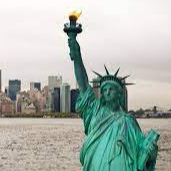Secrets Hidden in Famous Monuments

About
History uncovered!!
New Zealand
Description
The minuscule police headquarters in Trafalgar Square
There is one light post in London's Trafalgar Square that is more going on than might be immediately obvious. Covertly, it's truly a truly minuscule police headquarters — London's littlest, in fact. As indicated by The Telegraph, it was introduced in 1926 so police could be near the fights that so frequently happened in the square. It even supposedly had an immediate phone line to Scotland Yard some time ago. Assuming that you're ever across the lake, you can look in and have a look, however all you'll see are mops, since the station is currently utilized as a cleaning storage room.
The loft in the Eiffel Tower
Have you at any point fantasized about living in the Eiffel Tower? Indeed, your fantasies could technically be a reality, considering there's a mysterious loft incorporated into the landmark.
When Gustave Eiffel planned the pinnacle, he incorporated a confidential loft for himself at the top. When he kicked the bucket, he even left the spot in mint condition — furnishings and all. Today the flats life sized models of Eiffel and Thomas Edison, who was one of the fortunate rare sorts of people who got to visit the house. Guests can see the little space through a window with the purchase of a pass to the highest point of the pinnacle.
The Hall of Records at Mount Rushmore
When it was worked by Gutzon Borglum, this chamber behind Abraham Lincoln's head was intended to hold the records and relics generally important to American history, similar to the Constitution and the Declaration of Independence. And though the main papers are found elsewhere today, the unfinished hall houses a vault of records that tell how and why Mount Rushmore became. However, you'll have to trust us, as it's unavailable to people in general.
The tennis courts at Grand Central Terminal
One of New York's most active train stations has tennis courts in a generally secret space called the Annex. Throughout the long term, the region has seen numerous redesigns — it used to be a recording studio as well as a workmanship display — and has had different proprietors, including President Donald Trump at a certain point. At present, the space is known as the Vanderbilt Tennis Club, and it's open and available to general society.
The b-ball court in the Supreme Court
Americans treat their games exceptionally in a serious way, so it's nothing unexpected that Grand Central isn't the main U.S. landmark hiding a games office. Over in Washington, D.C., the U.S. High Court has a ball court on its highest level where agents, off the clock cops, and other Supreme Court representatives can shoot in the middle between court meetings. The b-ball court is appropriately nicknamed "The Highest Court in the Land," seeing as it sits over the structure's real court. As per Atlas Obscura, VIPs who've played here incorporate Byr
About
History uncovered!!
New Zealand
Description
The minuscule police headquarters in Trafalgar Square
There is one light post in London's Trafalgar Square that is more going on than might be immediately obvious. Covertly, it's truly a truly minuscule police headquarters — London's littlest, in fact. As indicated by The Telegraph, it was introduced in 1926 so police could be near the fights that so frequently happened in the square. It even supposedly had an immediate phone line to Scotland Yard some time ago. Assuming that you're ever across the lake, you can look in and have a look, however all you'll see are mops, since the station is currently utilized as a cleaning storage room.
The loft in the Eiffel Tower
Have you at any point fantasized about living in the Eiffel Tower? Indeed, your fantasies could technically be a reality, considering there's a mysterious loft incorporated into the landmark.
When Gustave Eiffel planned the pinnacle, he incorporated a confidential loft for himself at the top. When he kicked the bucket, he even left the spot in mint condition — furnishings and all. Today the flats life sized models of Eiffel and Thomas Edison, who was one of the fortunate rare sorts of people who got to visit the house. Guests can see the little space through a window with the purchase of a pass to the highest point of the pinnacle.
The Hall of Records at Mount Rushmore
When it was worked by Gutzon Borglum, this chamber behind Abraham Lincoln's head was intended to hold the records and relics generally important to American history, similar to the Constitution and the Declaration of Independence. And though the main papers are found elsewhere today, the unfinished hall houses a vault of records that tell how and why Mount Rushmore became. However, you'll have to trust us, as it's unavailable to people in general.
The tennis courts at Grand Central Terminal
One of New York's most active train stations has tennis courts in a generally secret space called the Annex. Throughout the long term, the region has seen numerous redesigns — it used to be a recording studio as well as a workmanship display — and has had different proprietors, including President Donald Trump at a certain point. At present, the space is known as the Vanderbilt Tennis Club, and it's open and available to general society.
The b-ball court in the Supreme Court
Americans treat their games exceptionally in a serious way, so it's nothing unexpected that Grand Central isn't the main U.S. landmark hiding a games office. Over in Washington, D.C., the U.S. High Court has a ball court on its highest level where agents, off the clock cops, and other Supreme Court representatives can shoot in the middle between court meetings. The b-ball court is appropriately nicknamed "The Highest Court in the Land," seeing as it sits over the structure's real court. As per Atlas Obscura, VIPs who've played here incorporate Byr
